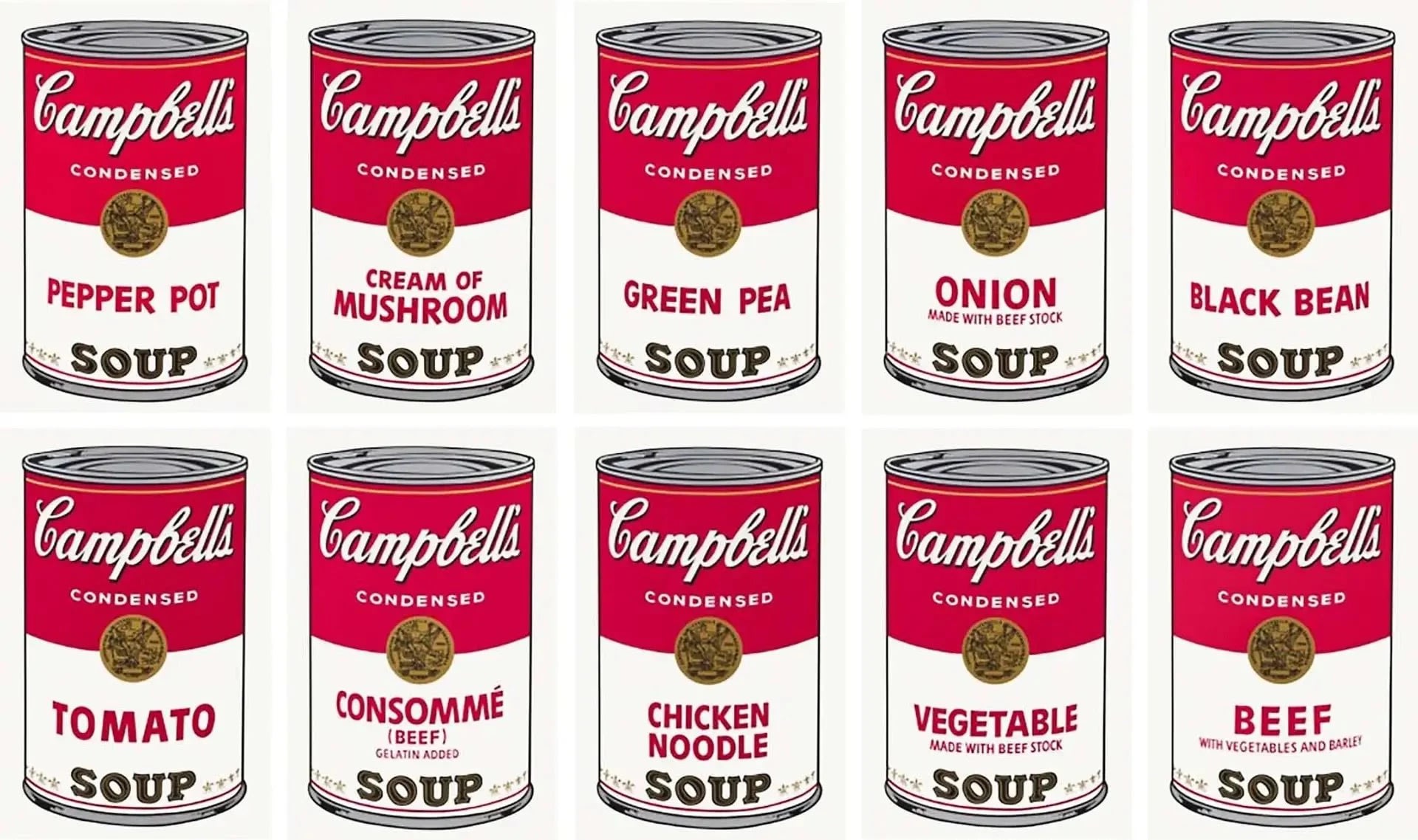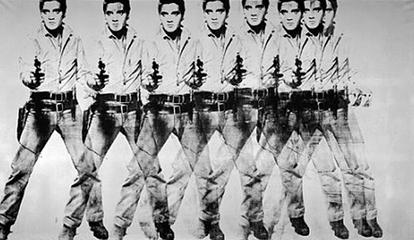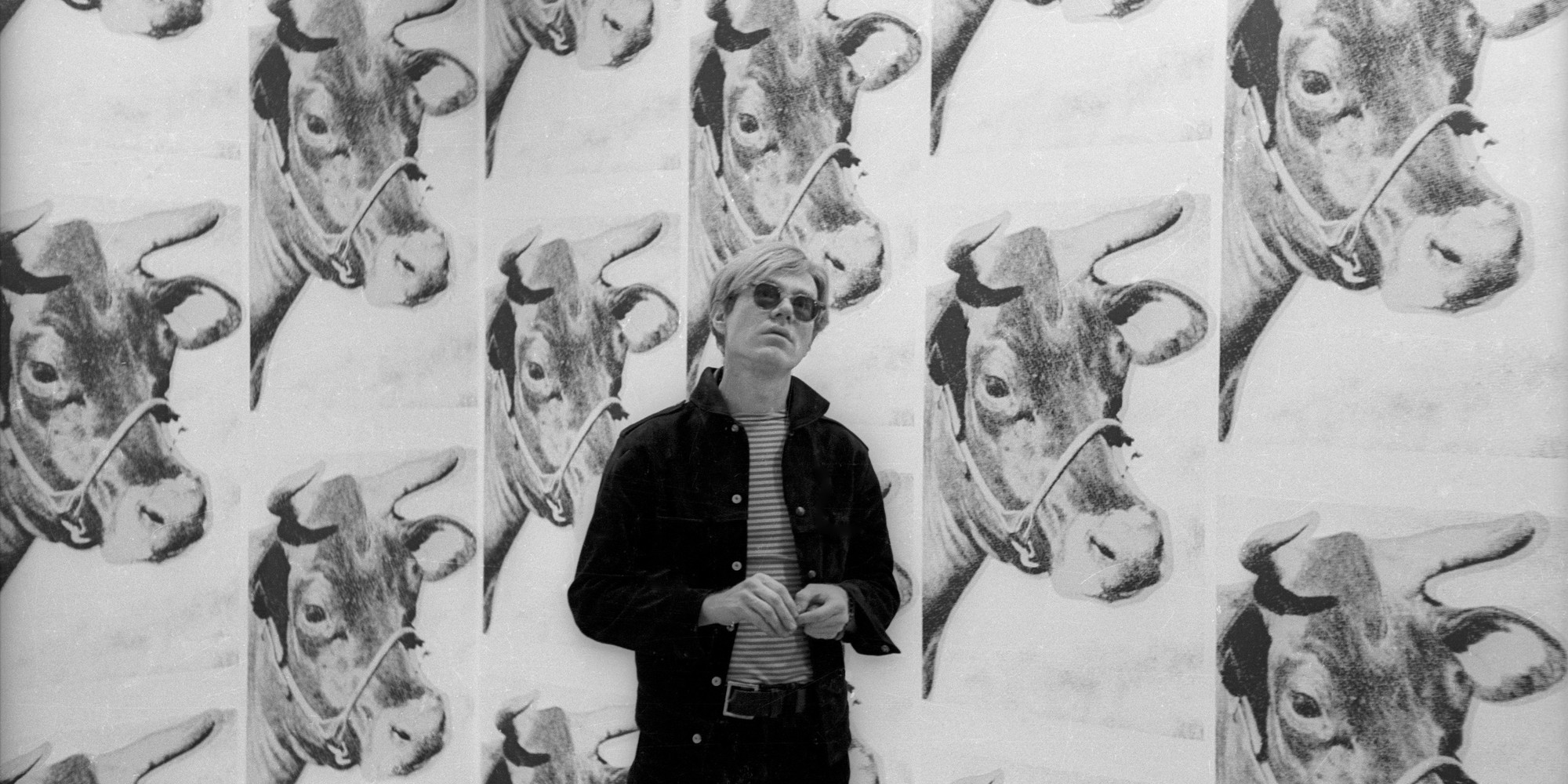Few artists have shaped the course of modern art as profoundly as Andy Warhol. Warhol transformed the landscape of art by elevating the imagery of everyday life to the realm of high culture. Central to his approach—and to the broader ethos of Pop Art—was the concept of repetition. Warhol’s repeated imagery, whether it was a Campbell’s soup can, the Marilyn Monroe portfolio, or a Coca-Cola bottle, wasn't merely an aesthetic choice; it was a radical commentary on consumer culture, fame, and the very nature of art itself.
We explore how Warhol used repetition, why it became a hallmark of Pop Art, and why this technique remains one of the most defining aspects of his career.

The Origins of Repetition in Warhol’s Practice
Before becoming the "Pope of Pop," Andy Warhol worked as a commercial illustrator in New York City. His early work in advertising instilled in him an acute awareness of the power of branding, mass production, and visual repetition. Products like Coca-Cola or Campbell’s soup cans were not only consumer goods; they were cultural icons, deeply embedded in the everyday lives of Americans through endless advertising and shelf displays.
Warhol’s early paintings, such as the famous Campbell’s Soup Cans series (1962), took these commercial images and repeated them systematically. Each can looked almost identical to the next, just as one would find in a grocery store. By replicating these images by hand—and later through mechanical processes like silkscreen printing—Warhol blurred the lines between high art and mass-produced commercialism.
Repetition in Warhol's hands became more than mimicry; it became a form of cultural critique.

Repetition as a Reflection of Mass Production
One of the central ideas of Pop Art was to challenge traditional notions of fine art by embracing imagery and techniques from popular culture. Warhol's use of repetition directly mirrored the manufacturing processes of the modern industrial world. Products were not unique, handmade artifacts—they were manufactured in vast quantities, identical and interchangeable.
By replicating images over and over, Warhol not only referenced the techniques of mass production but also questioned the value system of the art world. If a single Campbell’s soup can is considered art, does producing 32 nearly identical canvases elevate or diminish their artistic value? Warhol forced viewers to confront uncomfortable questions: What makes something art? Is uniqueness essential? Can art be mass-produced and still retain meaning?
This approach fundamentally redefined art’s relationship to originality and authenticity—concepts that had previously been sacred in the art world.
The Silkscreen Process: Mechanizing the Artistic Hand
Warhol's embrace of the silkscreen technique in the early 1960s was pivotal in amplifying his use of repetition. Silkscreen printing, traditionally a commercial printing method, allowed Warhol to mechanically reproduce images across multiple surfaces, introducing deliberate variations in color, registration, and texture.
The imperfections that emerged in the silkscreen process—misalignments, uneven inking, blurred lines—were left untouched by Warhol. These flaws underscored the tension between mass production and the handmade, emphasizing the human presence within mechanical reproduction. In this way, Warhol’s repeated images are not identical clones but carry slight, almost ghostly variations, creating a push and pull between sameness and difference.

Repetition as Commentary on Celebrity and Death
Warhol’s repetition was not confined to consumer goods. His portraits of celebrities—Marilyn Monroe, Elvis Presley, Elizabeth Taylor—employ the same techniques, presenting their images over and over, often in grids.
After Marilyn Monroe’s death in 1962, Warhol created one of his most famous works, Marilyn Diptych (1962), a large-scale painting featuring 50 images of Monroe, half in vibrant color and half in stark black-and-white. The repeated images, fading into oblivion, evoke the ephemeral nature of fame and the public's consumption of celebrity figures.
Similarly, his Death and Disaster series repeats haunting images of car crashes, electric chairs, and suicide victims. Here, repetition numbs the viewer, reflecting how media saturation desensitizes society to tragedy. Warhol understood that in an age dominated by mass media, repetition could both glorify and desensitize—a dual effect that remains eerily relevant today.

Repetition and the Pop Art Movement
While Warhol’s use of repetition is perhaps the most iconic, he was not alone among Pop artists in his fascination with mass culture and replication. Artists like Roy Lichtenstein, with his Ben-Day dots mimicking comic books, and Robert Rauschenberg, with his collaged prints, also explored the mechanical reproduction of popular imagery.
However, Warhol’s approach was distinct in its cold, almost detached execution. He did not attempt to "elevate" his subjects in a traditional sense; instead, he presented them as they were, over and over again, letting their inherent power (or banality) speak for itself.
This embrace of repetition marked a decisive break from the Abstract Expressionists who preceded him—artists like Jackson Pollock and Mark Rothko—who emphasized emotional intensity, individuality, and authenticity. Warhol, by contrast, celebrated the impersonal, the commercial, and the mechanical. In doing so, he embodied the spirit of Pop Art, which sought to democratize art by dissolving the barriers between high and low culture.
The Enduring Legacy of Warhol’s Repetition
Today, repetition remains central to Warhol’s legacy. His influence is visible across contemporary art, advertising, and even social media culture. In a world saturated with repeated images—Instagram posts, memes, viral videos—Warhol’s insight into the power of repetition feels more prescient than ever.
Moreover, artists like Takashi Murakami, Jeff Koons, and Damien Hirst have built careers on exploring themes of mass production, celebrity, and commercialization, all traceable back to Warhol’s groundbreaking work.
By repeating the everyday, Warhol revealed its extraordinariness. By embracing the mechanical, he exposed the deeply human impulses behind our obsessions with fame, consumption, and mortality.
Andy Warhol’s use of repetition was not simply a stylistic choice—it was a profound conceptual strategy that questioned the very nature of art in the modern world. Through repetition, Warhol mirrored the mass production of consumer culture, explored the fleeting nature of fame, and challenged long-standing artistic ideals of originality and authenticity.

In doing so, he redefined the boundaries of art, creating a legacy that continues to resonate in the Pop Art movement and beyond. His endlessly repeated images remind us that in a world of infinite copies, meaning is not lost but transformed—and that, sometimes, repetition is revelation.
Explore Andy Warhol prints for sale and contact info@guyhepner.com for latest availabilities. Looking to sell? We can help! Find out how to sell Andy Warhol prints with our New York and London galleries. Explore more Warhol content in What techniques did Andy Warhol use? The Five Most Famous Warhols and our Guide to Collecting Warhol.

